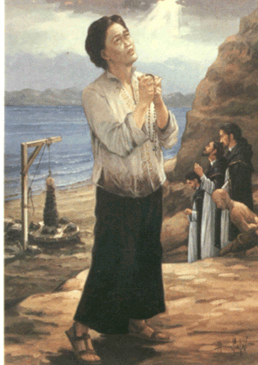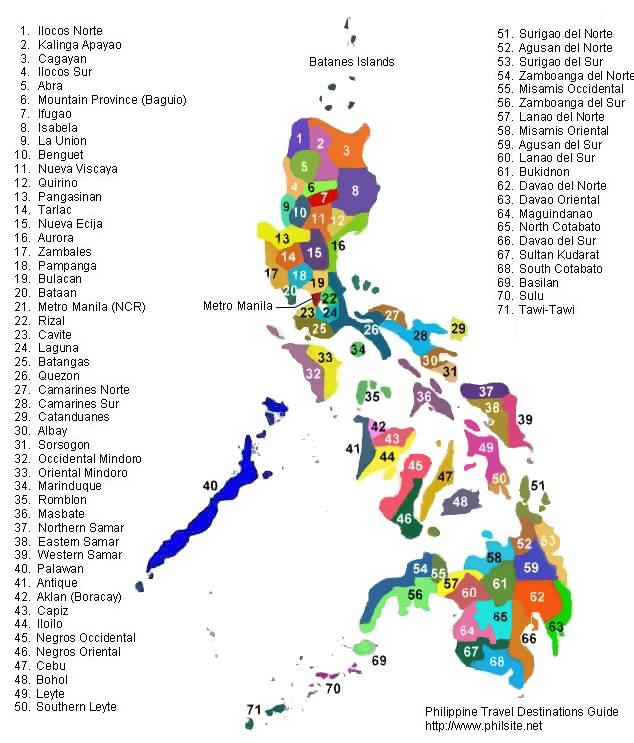MANILA, Philippines - There is something about little girls in their frilly pink skirts and tights clutching their mother’s arms on their way to dance school that warms the heart. You know that someday some of these little girls will take the world’s stage and carry on the art form on pointed toes. But where are the boys?
The absence of boys in any dance class, or at least the hugely unproportional number of girl dancers to boy dancers, is noticeable. Because in our enlightened society that is supposedly very open and welcoming to new paradigms and possibilities, the stigma continues that if you are a male dancer, you must be gay.
Yet, sitting at the helm of the country’s oldest and most prestigious dance company school is an internationally renowned and accomplished male dancer who is much credited for giving Ballet Philippines and its training arm, the Cultural Center of the Philippines (CCP) Dance School, a sense of continuity and tradition that is unbroken since the ‘80s.
One of very few Filipinos (another one being famous ballerina Liza Macuja-Elizalde) to have ever studied ballet in Russia, he has graced the world’s stage and brought home honors, but many believe it was his decision to stay put in the country and serve the dance company and the local dance community for over 30 years that makes him stand out from all the great dancers the country has produced.
As husband to wife Nini.
Meet Noordin Jumalon, Ballet Philippines’ principal dancer from 1980-1988, its acting artistic director from 1999 to 2000, the CCP Dance School (CCPDS) principal from 1986 to 1996 and its school director since 1996. His work as dancer, choreographer, coach and ballet master, dance teacher, school administrator, photographer and author are well known in the dance community. In a rare interview, he gave STARweek a glimpse into his highly accomplished dancing life.
“…I was lucky, it was my father who encouraged me to dance.”
Perhaps this is where the road divides. Jumalon’s father, a painter and an artist himself, saw his son’s gift of grace and movement in gymnastics and suggested that he try ballet as well.
“I was on the gymnastics team of the University of San Carlos. That was my PE and extra-curricular activity. My father was active in the Arts Council of Cebu. So he introduced me to Mrs. Fe Sala Villarica, head of the Arts Council. She has a dance studio. I passed the audition and became a scholar,” he recounts.
After obtaining his college degree in Geology, Jumalon says he actually worked as a field geologist. “I was employed by a mining company doing explorations for copper in Central Cebu, around 20 to 30 kilometers from the city. In the afternoon I attended dance classes. That was the time when there were no NPAs yet in the mountains of Cebu. After two years, I stopped but I continued the dance classes,” he shares.
The father was actually a bigger influence later in Jumalon’s career. He has choreographed several original full-length dance pieces that mostly have environmental themes. The first one, “A Forest Tale,” was staged for the fourth time in the summer of 2009, which coincided with the 40th anniversary of the CCP.
The other original works were: “A Garden Tale,” “An Urban Tale,” “Starzan,” “Under the Sea,” and “Baroque Fantasque.” These works are alternately staged every summer as the culminating show for the annual summer dance workshops.
“They’re not all environmental,” Jumalon clarifies. “But yes, some of them are about preserving the environment. My Papa was a scientist and an artist. He was a butterfly collector, he would go to the jungles in the Philippines – Palawan, Mindoro – to collect butterflies and artifacts. He loves the forest, nature. I was brought up that way.”
“...It was not meant for me, it was meant for another girl”
As a young geologist in 1971
Jumalon says his mentor passed on to him the scholarship grant at the State Institute for Theater Arts in Moscow after the original recipient decided to pass up the opportunity for marriage. So the young geologist-dancer arrived in Moscow in the winter of 1973. The classes were in Russian. He didn’t speak the language. This was Soviet era Russia, the height of the cold war.
“It’s cold, there was snow, the Christmas lights are on,” he recounts. “You are forced to learn the language very quickly because you need to take the lessons, you need to go to the shops. I was given a tutor but I guess I learned very quickly because some of the terms are in French and I have friends from Cuba and Latin America who helped me because I speak a little Spanish. Some speak English.”
It was a very different world, Jumalon says. The dance academy was state supported and the training of dancers was solely on government’s account and there was a very rigid screening process of who are accepted as scholars.
“They choose about a dozen from around a thousand applicants. Compared to here, not everybody there can dance. Students need to pass the initial screening and pass the auditions. They study for eight years, which is equivalent to late elementary and high school and first year of college. They graduate from the academy at around 18 or 19,” Jumalon says.
Asked what makes a good dancer based on the Russian standard, he says the screening starts with the basic physical requirements. “Puro manipis,” he laughs. “A dancer must have the perfect body: wafer thin, long legs, short torso, long neck, flexible. A panel of judges will examine the face, and test for musicality, grace.”
But what really makes a good dancer, he says, is attitude: “The more days you train the better, but you’ve also got to have commitment, discipline, the drive, inner drive, and character.”
“…Talent is not enough. I better work with somebody who is not so physically perfect but hardworking.”
In the Philippines, Jumalon says the screening is not as rigid because anybody can pay to learn how to dance. Ballet Philippines is the only dance company that has more than 200 scholars on its roster year-round. Its training arm, the CCPDS, has already trained 3,200 scholars since it started. Most of them eventually join the dance company and many others have gone abroad for further training or greener pastures.
Having served as the school’s principal and director for decades, Jumalon is largely known to generations of dancers who had passed through BP’s portal as strict, demanding, and always looking for excellence. True, he admits. Yet, he has also emphasized that talent is not enough.
“You may have the best body and musicality and face but if you are lazy, I better work with somebody who is not so physically perfect, but hardworking, has perseverance to succeed,” he stresses. This is not Jumalon, the dancer and artist, speaking, but the teacher in him speaking.
“Because I started dancing late already, in Russia I focused on a teacher’s course, dance pedagogy,” he says. Indeed, to the current generation taking ballet, not too many would remember Jumalon’s best performances on stage as a Ballet Philippines principal dancer in the ’80s. But every generation in the last three decades will remember him as “Teacher Noords.”
Jumalon actually went back to Moscow in 1977 where he mastered the Vaganova Method for Teaching. As a dance educator, he was co-author of the Philippine Ballet Syllabus I and II that are being used in the CCPDS and many ballet schools in the country.
“...Considering our performance in ballet competitions, we are not bad.”
When asked how he sees the state of ballet and ballet education in the Philippines, Jumalon will be the first to wear pride on his sleeve. He cherishes the most recent wins of BP principal dancers Candice Adea and JM Cordero internationally, because he knows that these triumphs were won from very little resources the CCP and BP could provide.
“The Beijing dance academy has 42 dance studios, which are separate from their gymnastic studios. We have one and a half,” he says, referring to the rehearsal hall BP shares with the Philippine Philharmonic Orchestra, and the baby ballet studio that at times would be used by a class of more than 30 dancers.
“Still we produce dancers,” he stresses.
When Rep. Ferdinand “Bongbong” Marcos Jr. filed in Congress a bill proposing to make Ballet Philippines the national dance company for ballet, the BP community was exuberant. However, it was a brief moment of celebration as the bill is now pending in the House of Representatives besieged with huge oppositions from many sectors of the dance community.
“Let our track record speak for ourselves,” Jumalon says simply.
Of the need to train better dancers, produce great shows, he has more to say. As a CCP resident dance company, BP gets a small funding from the government and the use of its studios and offices. However, he says, to mount four productions a year at the CCP Main Theater, bring its shows overseas and to the provinces, support 200 scholars, maintain the school and carry on its work, the company needs around P30 million a year. Most of the funds come from the donor community.
To convince donors that their money is worth spending and to get more audience to watch ballet, Jumalon says BP needs to produce very good shows and keep our dancers with international caliber.
“It has to reach a point where it becomes an experience. That’s the difference we can provide to people coming to the CCP to watch ballet. The audience must come out of the theater saying ‘Wow! What an experience’,” he says. “When you see the beauty you don’t have to understand it. It doesn’t have to be cerebral, you have to enjoy it and experience it.”
He admits it is much harder now to get a big audience compared to the ’80s because BP was the only company then, there was no Internet, there were very few malls and the whole technology and entertainment system was not yet developed.
“Now the competition is great. I go to the mall, I get entertained. Why bother to go to CCP, dress up, spend, bother with the traffic on a weekend when you can be entertained at home?” he asks, but adds, again, “It should be the experience.”
Yet, it is also a fact that BP’s enrollment is higher and there is greater interest in dance now. Making BP the national dance company for ballet would help it produce even greater shows and develop more talents, which the country has in huge abundance. In fact, Jumalon says, Filipino dancers are leaving in droves to Hong Kong and Singapore for better pay and greater exposure. Many others are in the US or Europe. There was even a year that 15 company members left at the same time, leaving a vacuum which, because of the great store of talent here, was not left empty for long.
Every year it happens, not just in BP but across the dance and arts community. As a seasoned dancer, Jumalon will be the first to tell anybody that one cannot dance forever. After the body has aged, one has to reinvent himself, become a teacher, a choreographer, or go into arts management. But it is not true of dance companies that must continue to evolve, harness talents, produce great shows and pass on the tradition to the next generation. Take it from Teacher Noords.




























